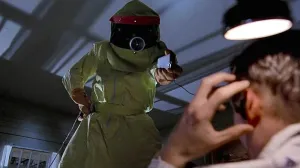Now that the James Webb Space Telescope has been up in running for several weeks by now, Jupiter has been a central focus of the cosmic observatory. Earlier this year, NASA released new photos the telescope captured of our solar system’s largest planet. Now, a citizen scientist has parsed the data captured by the Webb Telescope to craft an image of Jupiter of her own.
Videos by ComicBook.com
Monday, NASA’s social media platforms shared the image processed by Judy Schmidt, showing Jupiter in its entirety, including the gas giant’s Great Red Spot.
“The brightness here indicates high altitude – so the Great Red Spot has high-altitude hazes, as does the equatorial region,” said Heidi Hammel, Webb interdisciplinary scientist for solar system observations and vice president for science at AURA, said in a NASA blog post. “The numerous bright white ‘spots’ and ‘streaks’ are likely very high-altitude cloud tops of condensed convective storms.”
A second image shows off the planet’s rings and a few of its moons.
“Something about it just stuck with me, and I can’t stop. I could spend hours and hours every day,” Schmidt added of her telescope photos processing interests. Based in Modesto, California, Schmidt has no form training in astronomy, instead getting interested in the craft during a contest hosted by the European Space Agency some 10 years ago. She added, “I try to get it to look natural, even if it’s not anything close to what your eye can see.”
“Jupiter is actually harder to work with than more distant cosmic wonders, Schmidt says, because of how fast it rotates,” NASA continued. “Combining a stack of images into one view can be challenging when Jupiter’s distinctive features have rotated during the time that the images were taken and are no longer aligned. Sometimes she has to digitally make adjustments to stack the images in a way that makes sense.”








